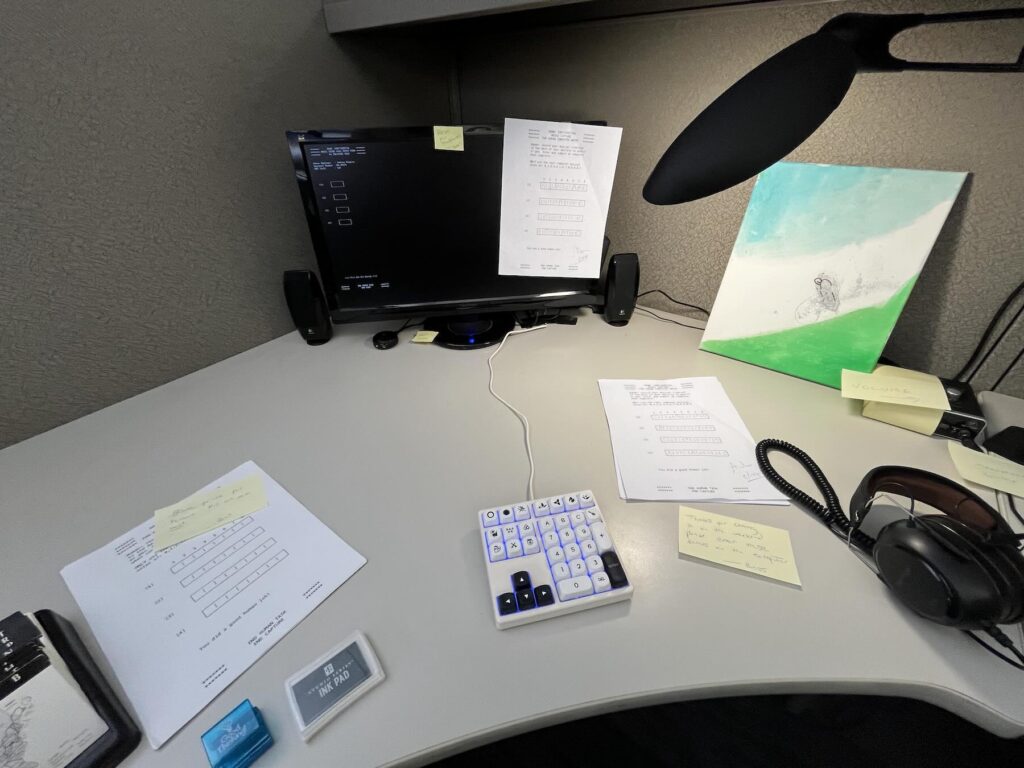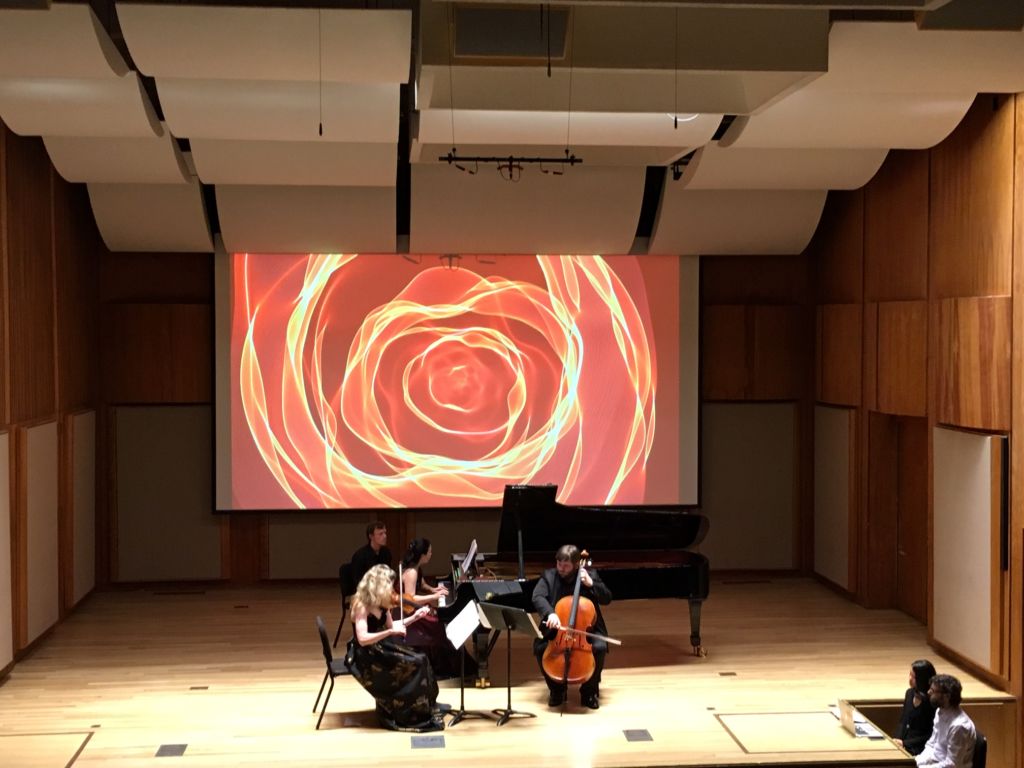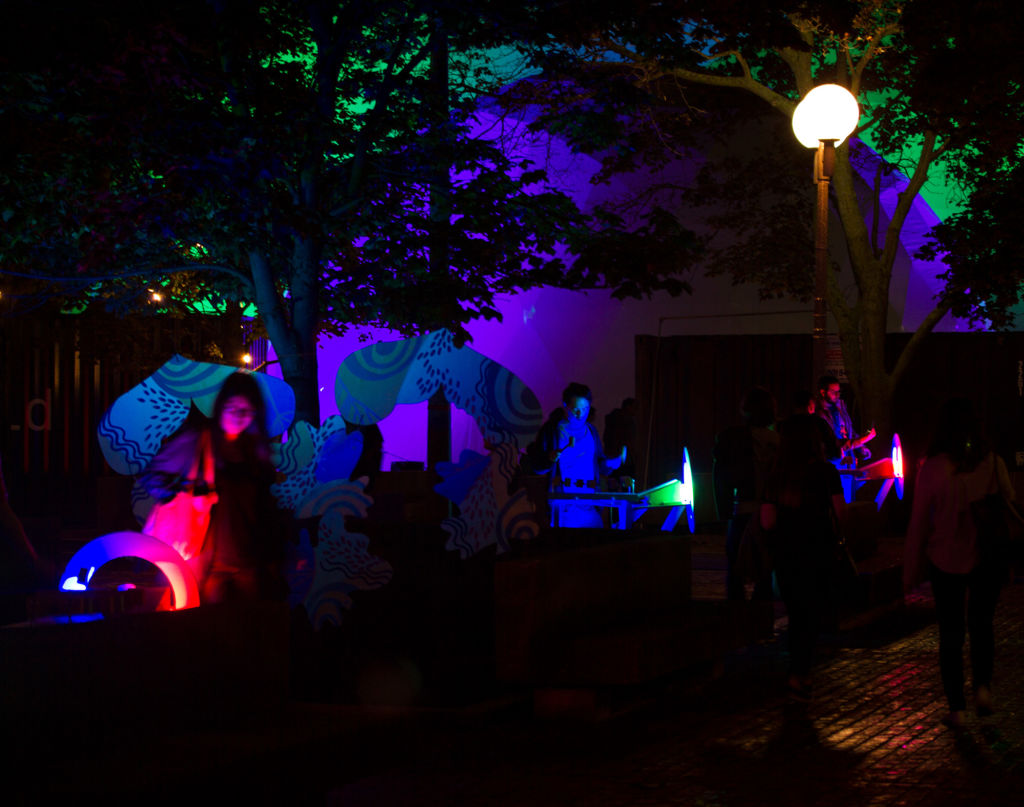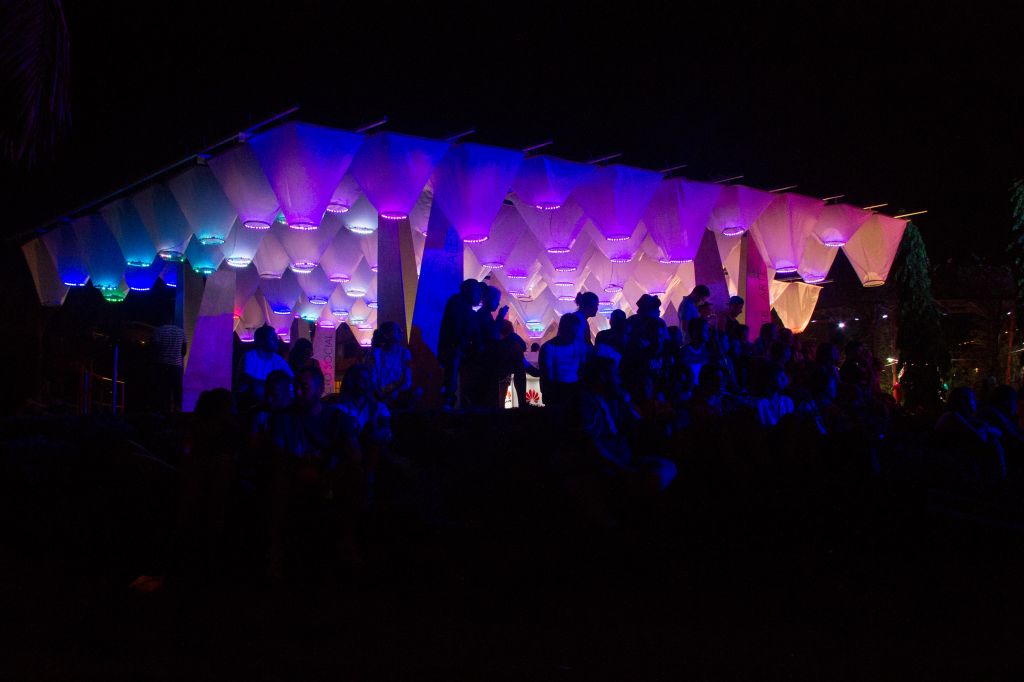Something Musical About Forms is a musical step sequencer drum machine disguised as a form entry task on a 1980s style text-based computer terminal interface. The work was shown during the event: DAWN of Compliance which took place on Saturday, May 3rd, 2025, a creation of the studio Also.Does.Stuff. DAWN of Compliance is an immersive theater created around the concept of a dystopian corporate office environment where attendees are treated as new office hires. Continue reading
public
Almost Mirror
Almost Mirror is almost a mirror. It encourages the participant to bring more fully into to consciousness the medium of the color digital display. This display, like most displays, represents a simulation of a full-color reality through the use of only 3 colors of light: a Red, a Green and a Blue that some-what match the prominent light sensitivity of “red”, “green”, and “blue” cones in some human eyes, to create the illusion of a full color experience. Continue reading
Sound Squares
Sound Squares is an abstract interactive experience where festival goers can create visuals and sounds by walking in front of the installation. Sound Squares has two modes and switches between them every minute.
This project was shown at the Somerville Ignite Festival on October 2nd 2021 and funded by the Somerville Arts Council. Continue reading
City Built
City Built by Andrew Ringler; adapted from code by Luca Sassone Schizzo Creative Commons Attribution ShareAlike, October 2nd, 2010
City Built is an algorithmically generated line-drawn city skyline created in the Processing language. City Built was shown as a projection on a building facade most evenings from 5—9pm November 15th 2019 through February 2020 in Union Square, Somerville Massachusetts. City Built is supported by a grant from the Somerville Arts Council, a local agency supported by the Massachusetts Cultural Council.
Ghost Mirror
Video by Alyssa Ringler
Artist Statement
Walk by, look at the tablet, see what happens. Stand still, see what happens. Ghost mirror simultaneously shows the present, the very—near—past, and the slightly more distant very—near—past. Enjoy. Continue reading
můj-emoji

můj-emoji, by: Alyssa Ringler + Andrew Ringler. Photograph by Alyssa Ringler
Valašské Meziříčí, Česká republika: Festival Světlo Valmez | Valmez Festival of Lights + Music September 6-7, 2019
Collaboration with Alyssa Ringler
můj-emoji was created by Alyssa Ringler and Andrew Ringler and was installed from September 6-7, 2019 at the Valmez Festival of Lights in Valašské Meziříčí, Česká republika: Festival Světlo Valmez | Valmez Festival of Lights. It was funded through a grant by the U.S. Embassy Prague, Office of Public Affairs Small Grants Program with additional sponsorship from Festival Světlo Valmez. Continue reading
Public Radio
Public Radio is a collaboration between New American Public Art and Andrew Ringler.
See New American Public art’s post about the radio at newamericanpublicart.com/publicradio.
Public Radio is a giant controllable public FM radio. It plays music from FM stations, visitors can change the station or volume by turning giant plastic wheels mounted on the front. I was responsible for the design and fabrication of all electrical components including: audio, FM radio control, lighting, channel and volume changing sensors as well as all programming of the microcontroller. Continue reading
Neave Visuals
Visuals by Bing Lin and Andrew Ringler
in Collaboration with Neave Trio (Anna Williams, Mikhail Veselov, Eri Nakamura)
Neave Visuals is an audio responsive projected visual experience created by Andrew Ringler and Bing Lin in collaboration with Neave Trio. Continue reading
Slightly Structured Visual Noise
Visuals by Andrew Ringler mimic-ing the Cirque Noir Elephant on Ball logo reacting to sounds by Know Thyself by Aphrohead and Clarian from Founders of Filth Volume One Felix Da Housecat
“Slightly Structured Visual Noise” is a constantly evolving visual experience running throughout the evening at Cirque Noir X Houston X Scorpion (November 10th 2018) reacting to the DJ’s music live. “Slightly Structured Visual Noise” runs unattended as an autonomous agent-based model taking cues from the DJ’s sound in addition to following beautiful semi-harmonious gradient noise spaces like ridged multifractal, Perlin, Voronoi and spherical.
I created a set of sound-reactive Processing sketches that played throughout the evening generating unique and ever-changing visuals on multiple screens, walls and surfaces always reacting to the ever changing DJ’s beats.
Wellspring Fords (Illuminus 2017)
Collaboration with Cindy Sherman Bishop and Philip Gedarovich.
Boston’s Spring Lane is transformed into Wellspring Fords, a communal watering hole that encompasses the days of Shamut peninsula before the Pilgrims to the present day. Continue reading
Enchanted Forest (HubWeek Immersion 2017)
Collaboration with Fish McGill and Saul Baizman.
Enchanted Forest is magical interactive experience for all ages, installed at the Government Center promenade. The Forest contains multiple hands-on exhibits and responds to the natural environment Continue reading
Ignite Beats
Ignite Beats Promo Video by Philip Gedarovich.
Ignite Beats is a collaboration between Andrew Ringler and Philip Gedarovich.
It is an interactive digital sound and visual experience activated by visitors using Ignite themed blocks at the Somerville Ignite Festival on August 19th 2017. Continue reading
Art Screen Workshop
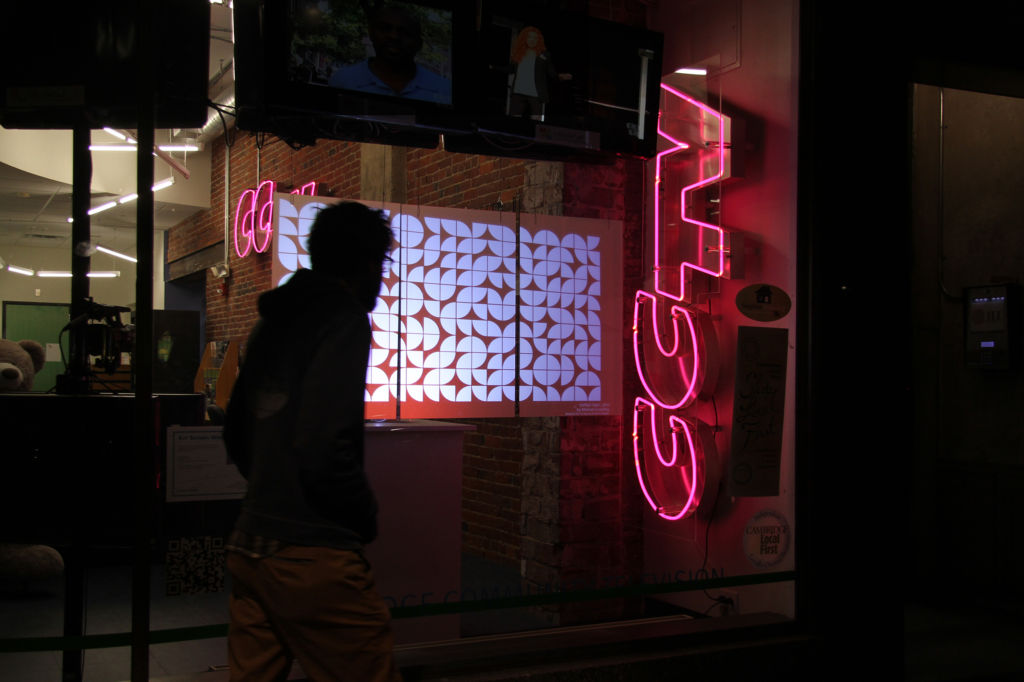
![]()
I am teaching students how to program interactive art in a new series of free workshops called Art Screen Workshop. Continue reading
Fruit Beets
Fruit Beets is a collaboration between myself and Philip Gedarovich. Fruit Beets is an interactive sound and visual experience activated by the fruit and vegetables of festival visitors. Installed on a banquet table inside a white tent at the Somerville Agricultural Festival on October 2nd 2016. Continue reading
Art Farm Fence
Art Farm Fence is semi-permanent fence decorations; a collaboration between Andrew Ringler and Alyssa Ringler. The project was created in response to an open call for art from the Somerville Arts Council. The Arts Council wanted work installed on the fence that encloses the future site of the Somerville ArtFarm. Continue reading
Macropavilion Panama
Macropavilion is a public outdoor pavilion providing visitors with shade from the sun as well as an interactive LED light experience in Casco Viejo, Panama. It was the result of a collaboration between myself, Valeria Lalinde, Miguel Espino and the architecture firm Suma Group. Continue reading
